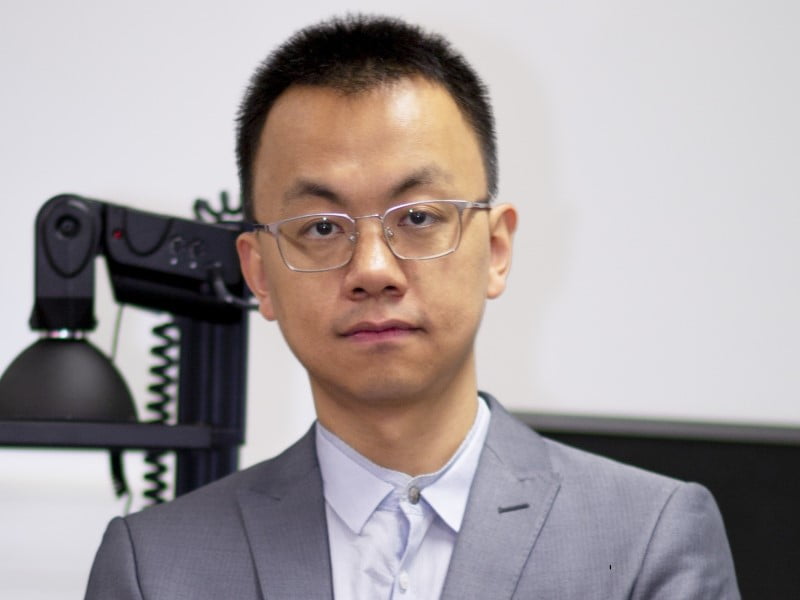Leading catalytic renewables refinery researcher Professor Tianyi Ma is looking to commercialise his research team’s innovative techniques for hydrogen production and converting carbon dioxide into useful chemicals.
Professor Ma wants the technology spun out from RMIT University but acknowledges that it could take up to a decade to take his research from the lab to a commercial scale. He has also highlighted the lengthy patent application process and the need to attract tech-savvy investors as additional barriers to the process.
Professor Ma has applied for patents for between technology readiness levels (TRL) three to five, which include the “demonstration and pilot plant prototype stage” and can be “readily taken by industry”.
“In lab scale, we can, for example, manufacture some electrolysers with the power of 0.2-0.3 kilowatt. To be practically usable, we have to scale it up to maybe 2-3 kilowatts, so 10 times higher. That is the threshold,” he said.
“It may take … three to five years, and I think 10 years is a reasonable number to commercialise these kinds of new tech.”

Professor Ma’s work in renewable refineries focuses on the development of catalysts that enable renewable energy to be used to produce fertilisers, clean fuels like hydrogen, and other useful chemicals.
He has also developed electrolyser units that can convert carbon dioxide into useful products like syngas, methanol, and formic acid, which has a plethora of uses from a preservative to processing of textiles.
This could be made compatible with existing carbon capture technologies, substituting the need for large carbon dioxide sequestration sites with a value-adding production process.
“We have been making several electrolyser prototypes and hydrogen generators as pretty large-scale demonstrators, the size of roughly one square metre and at the kilowatt level. That’s something quite ready for practical deployment,” Professor Ma said.
“One good thing about these new technologies is they are module based, so that means you don’t really need to build a single unit with a huge site. That’s what I do with the electrolyser. We make a two or three kilowatt unit that if you want to make it scale up, you can replicate it and connect them together.”
Professor Ma is undertaking the process of filing a patent for technologies which will be owned by the RMIT research team he leads.
“When they touch the patent thing it’s kind of sensitive. When you have more collaborators it’s very complicated. It will be exclusively owned by our team at RMIT, we can have this technology filed and then get this startup [founded],” he said.
Professor Ma said it is not clear how revenue would be split between the university and a future spin-off company and that he would likely serve as chief technology officer.
The aim is to receive funding support as an RMIT spin-off, through the state government’s Breakthrough Victoria scheme, and private investment from an organisation familiar with commercialisation “but also knows technology”.
Among the technologies he is developing is a floating photocatalytic hydrogen generator which can split water – even sea or waste water – into hydrogen and oxygen without the need for an electrolyser or external power source. It is estimated it could produce hydrogen at a cost of $3.70 per kilogram.
Professor Ma has received more than $6.2 million in grants the Australian Research Council, the Cooperative Research Centres program, and the Australian Renewable Energy Agency. He has collaborated with a number of organisations such as CSIRO, Victorian state-owned water retailer South East Water, and is currently in communication with Siemens Australia.
On Tuesday, he was announced as Australia’s nominee for the annual Asia-Pacific Economic Cooperation (APEC) organisation’s annual Science Prize for Innovation, Research and Education, and will be assessed against 20 other researchers below the age of 40. The prize is sponsored by academic publishers Wiley and Elsevier who have funded a US$25,000 prize.
Professor Ma, who was nominated for the award by the Australian Academy of Science and the Industry department, has published more than 250 peer-reviewed papers, of which he is the lead author on more than 160. His work has been cited more than 28,000 times.
Reacting to his nomination, Professor Ma said he’s very happy to have his last decade of work formally recognised. He currently leads RMIT University’s Carbon Neutrality Group and collaborates with researchers across the world, from the United States and the United Kingdom to Saudi Arabia and China.
“I think it’s not only a recognition for myself, but also a recognition for the scientific field I was working in, clean/renewable energy nanoscience and nanotechnology,” Professor Ma said.
InnovationAus.com will host a Capability Papers forum focused on Manufacturing and Energy Transition at the Museum of Sydney on August 15. Join industry and research leaders, together with state and federal ministers for this important discussion by reserving you seat here.
Do you know more? Contact James Riley via Email.

